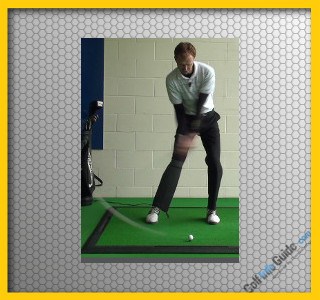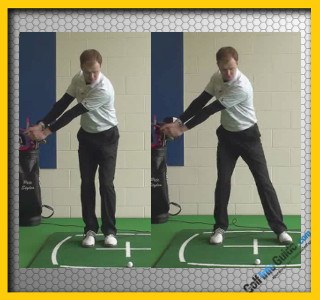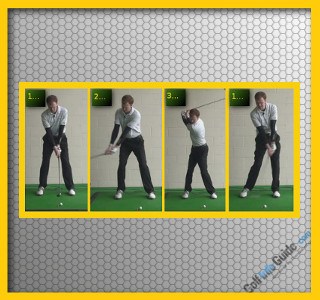Swing tempo is often confused with rhythm and many believe the two are the same. They are not. Tempo is the speed while rhythm is the fluidity. When a player has good rhythm it generally means they’ve developed some great fundamentals that allow the golf club to flow smoothly with no interruption. Someone with great tempo has a consistent building up of speed in his/her swing that results in solid contact.
When golfers struggle with Tempo, it can stem from a number of problems such as poor concept on tempo believing they need to alter the speed. Sometimes there’s underlying tension built up that creates varying speeds in the swing. Tempo should come second nature to us all. When we walk, there’s a certain tempo to our strides that we don’t even think about. Some of us walk slowly with long strides, while others walk short and quick. Our bodies all have a personal tempo which filters into our golf swing. If we disrupt this natural tempo, it may cause some serious frustrations while playing golf.
The following tips will further help to improve your swing tempo.
The first thing to understand when it comes to tempo is the difference of speed from your backswing to downswing. The idea is to have these speeds relatively close together with the downswing naturally picking up speed. For example, if you had a backswing speed of 30mph and a downswing speed of 80mph, it would seem that there’s too much of a difference in speed. This is seen when a golfer thinks they need to have a slow takeaway followed by an unnatural picking up of speed. Sometimes we see golfers swing the opposite, where all the speed happens in the backswing and is lost in the downswing. The perfect example of speed would be 40% on the backswing and 60% on the downswing. The main idea is to ensure the gap between backswing and downswing is as close as possible with the perfect build up to impact.
Do you take a while to wake up in the morning? Or do you jump out of bed ready to go? Do you talk fast? Do you walk slowly? Our personal traits will ultimately dictate the tempo of our golf swing and there’s not much we can do about it. Knowing yourself and the habits you have may be the key to accomplishing a perfect tempo to your golf swing. Tempo is usually dictated by your temperament and personality. If you have a fast, upbeat personality, you will struggle to slow your swing down to create more accuracy. Similarly, naturally slower individuals who try to inject more speed into their swing in an attempt to hit the ball farther will also face problems. The key point is to not change YOUR tempo but work on fundamentals that will allow for better rhythm of your swing.
The step drill is very simple and can help time your golf swing to give you improved rhythm. This drill will create fluidity between backswing and downswing. Get into your address position and stand with your feet very close together. Swing the club back and just before you start the downswing step toward the target with your left foot (right foot for left handed golfers). The step should only take your stance just wider than shoulder width. What this drill engrains is proper weight transfer and how to move from backswing to downswing without any hesitation or difference in speed. What you should feel is a fluid transition that is completed with a solid balance finish position. After a few repetitions without a golf ball, try hitting a series of shots with a golf ball. When done correctly, you will feel a major difference in your tempo and ball striking.
A great test for your tempo is to time your golf swing. Take a stopwatch and have someone time approximately ten shots. It’s very important to understand we are not trying to increase or decrease the time. Rather, we want to see consistency between each swing. The top professionals will ultimately have the same time over and over again. But keep in mind, each professional will have slightly different speeds. You will want to start the stopwatch right when you start the swing and stop it when you get to a full finish position. If you have varying times, it’s important to take note of the balls you hit well, and record the time. This will become your target time to work each swing towards. If you can achieve this time on each swing, you will have a much greater chance to hit the ball consistently.











